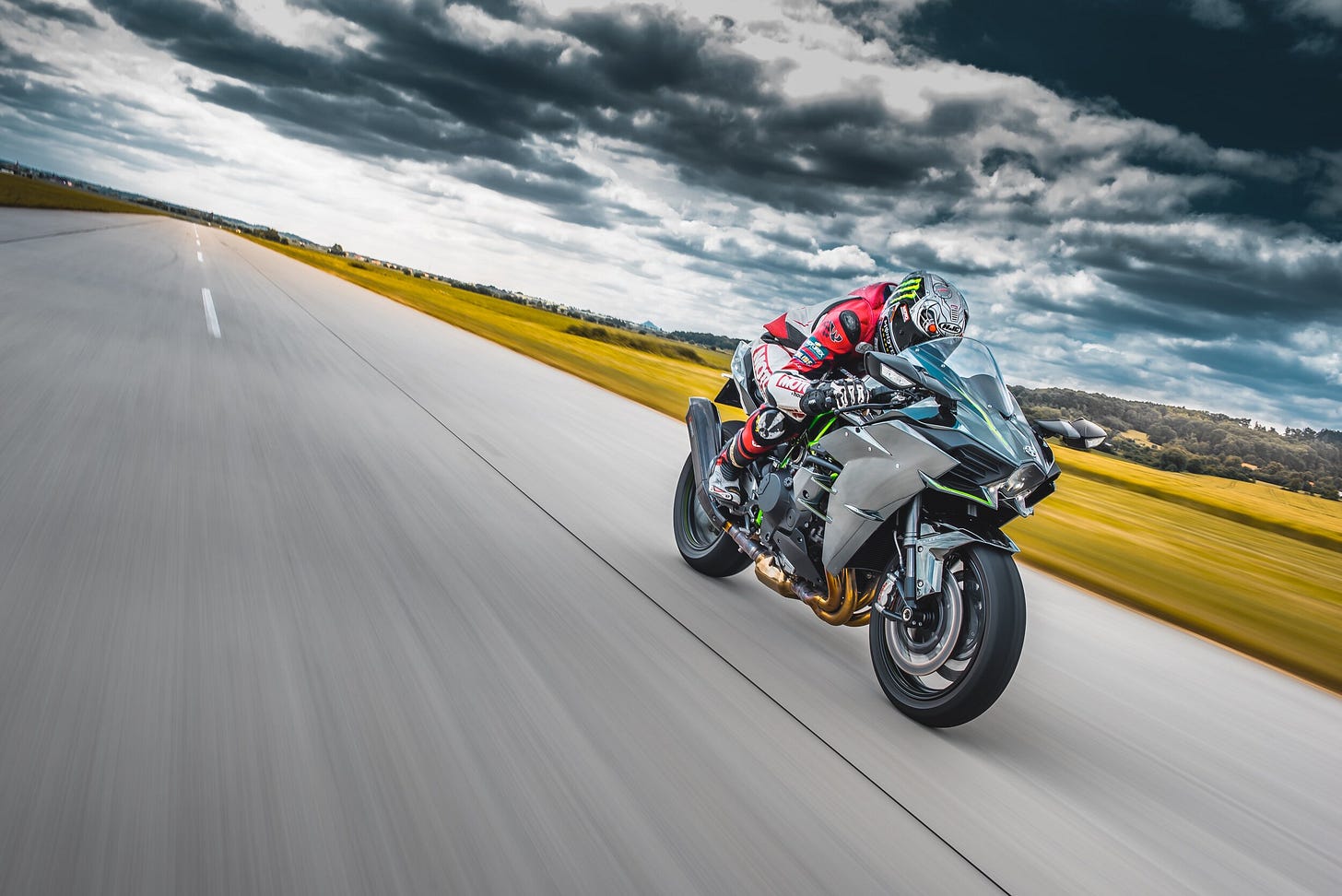Where’s Your Focus?
A few weeks ago I attended a California Superbike School. It was held at Barber Motorsport Park just outside Birmingham, Alabama. My goal was to become a better rider. An added benefit was riding a 2020 BMW S1000 racing bike at speeds exceeding 125 mph. Exhilarating!
Keith Code, who started the school, is an entrepreneur and former motorcycle racer. He is a unique cat, now in his early seventies, who wears full leathers and is still going fast. He told me, “I quit racing at 46 after crashing my bike at 140 mph. I broke a few bones. It was time to stop racing and teach what I’d learned about motorcycles in twenty years of racing.”
What makes Keith unique is he is a teacher. He told me, “When I was racing in the early sixties, I had no idea what I was doing. I just went fast. But to win races, I realized going fast wasn’t enough. I had to pay attention to what I was doing. I had to become a better racer by understanding the dynamics between me and the motorcycle.”
He used the phrase, “Pay Attention.”
In 1983 he wrote his first book A Twist of the Wrist. In the introduction, he spoke about attention. Here is what he said, “Attention and where you spend it while riding a motorcycle is a key element in how well you will function: Attention has its limits. Each person has a certain amount of it, which varies from individual to individual. You have a fixed amount of attention just as you have a fixed amount of money. Let’s say you have a ten-dollar bill’s worth of attention.”
This concept of a limited amount of attention really hit me. “If I have only $10 worth of attention, how am I spending it when I ride?”
Then, later in the introduction, Keith answered my question.
“The things that you do not understand are the things that will take up most of your attention.”
Application
There was so much happening so quickly when I was riding around the racetrack. Other riders zooming past me. Hairpin turns at the end of fast straightaways. Hard braking. S turns followed by hard banking turns. Rolling on the throttle at the right time to accelerate out of a turn.
What do I pay attention to?
The course curriculum addressed this question. Keith said, “High-performance riding and racing demand not only that you be able to perform the necessary actions, but also that you be able to observe them. If you know what you have done, you know what can be changed.”
Keith implemented this concept through drills.
The first drill was throttle control. Throttle control is the most important aspect of riding a motorcycle—when to increase it, when to moderate it, and when to kill it.
In classroom training, he showed us what the motorcycle does when you increase the throttle. It immediately affects the stability of the bike by extending the front forks and moving the weight to the rear wheel. Killing the throttle has the opposite effect.
When you kill the throttle, it depresses the front forks which shortens the wheelbase, making it easier to make a tighter turn.
Knowing this we practiced killing the throttle at just the right time to start our turns on the racetrack. I first tried it by myself. Then my instructor caught up to me, and while leading and using hand signals, showed me when to kill the throttle just before a turn and when to open it up in the turn.
Almost all my attention was on doing this drill well.
When I exited the racetrack, I had a debrief with my coach. He asked me what I’d learned and observed about my riding and the drill. Then he told me what he’d observed. I learned so much in that one simple drill. I became a better rider by understanding the physics of my actions on the motorcycle. And I did it by giving my full attention to this “kill the throttle” drill.
The class went on for two days following the same outline. Twenty minutes in class gaining an understanding of the interaction of rider and motorcycle. A specific drill was described and assigned. Then twenty minutes on the track practicing the drill giving most of my attention to that one aspect of riding. This was always followed by a debrief. We repeated this in seven sessions each day.
Spending my attention, what limited amount I have, on a specific drill made me a better rider.
On the drive home, I started thinking about my first love, entrepreneurs. And I realized this limited amount of attention applies to starting and growing a company.
In fact, the things the entrepreneur does not understand is what takes most of his/her attention. Thinking you understand when you really don’t will make you dangerous.
Stick to the basics.
Read and learn.
Practice a drill.
Work with a coach.
Get better.
Stay alive.
Subscribe to Charlie’s Blog and Zoom Chat
Helping entrepreneurs achieve their dream of starting and growing their own company.
Email Address
Sign Up
Thank you!


